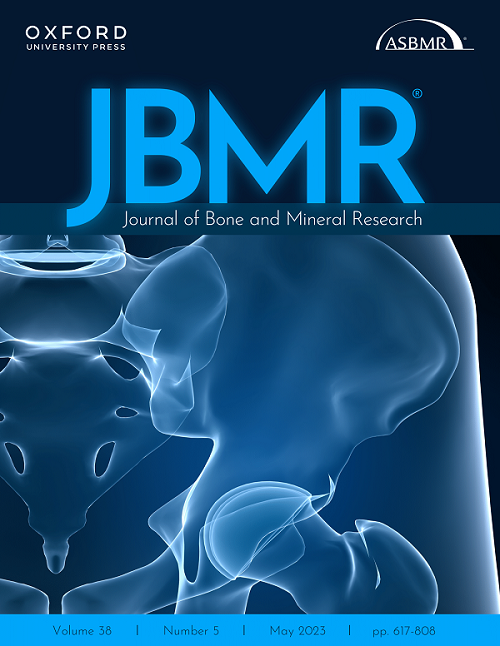下载PDF
{"title":"早产和低出生体重与儿童期骨折的关系","authors":"Ilari Kuitunen, Reijo Sund, Ulla Sankilampi","doi":"10.1002/jbmr.4833","DOIUrl":null,"url":null,"abstract":"<p>Preterm birth and low birthweight have been associated with increased fracture risk in children. Our aim was to analyze bone fractures during childhood in preterm, and low-birthweight newborns compared to full-term and normal-birthweight newborns. We conducted a nationwide register-based cohort study in Finland from 1998 to 2017 and utilized the Medical Birth Register and Care Register for Health Care. All newborns alive 28 days after birth were included, and data on all fracture visits in specialized healthcare units were gathered. Incidences per 100,000 person-years with 95% confidence intervals (CI) were calculated, and comparisons were made by incidence rate ratios (IRRs). Kaplan–Meier analysis was used to analyze the timing of fractures during childhood (0–20 years). We included a total of 997,468 newborns and 95,869 fractures; the mean follow-up was 10.0 years, and the overall incidence of fractures was 963 per 100,000 person-years. Very preterm (<32 gestational weeks) newborns had 23% lower fracture incidence than term newborns (IRR 0.77; CI: 0.70–0.85). Preterm newborns (32 to 36 gestational weeks) had a fracture rate (IRR 0.98; CI: 0.95–1.01) similar to that of term newborns. Birthweight showed a linear increase in the fracture rates as newborns with birthweight less than 1000 g had the lowest fracture incidence of 773 per 100,000 person-years and the highest incidence (966 per 100,000 person-years) was among newborns with birthweight 2500 g or more. Children born very preterm or with extremely low birthweight have in general a lower fracture incidence during childhood compared to children born full term and with normal birthweight. These findings possibly reflect, in addition to improvements of neonatal intensive care and early nutrition, the fact that childhood fracture incidences are more dependent on issues other than early life events. © 2023 The Authors. <i>Journal of Bone and Mineral Research</i> published by Wiley Periodicals LLC on behalf of American Society for Bone and Mineral Research (ASBMR).</p>","PeriodicalId":185,"journal":{"name":"Journal of Bone and Mineral Research","volume":"38 8","pages":"1116-1124"},"PeriodicalIF":5.1000,"publicationDate":"2023-05-23","publicationTypes":"Journal Article","fieldsOfStudy":null,"isOpenAccess":false,"openAccessPdf":"https://onlinelibrary.wiley.com/doi/epdf/10.1002/jbmr.4833","citationCount":"0","resultStr":"{\"title\":\"Association of Preterm Birth and Low Birthweight with Bone Fractures during Childhood\",\"authors\":\"Ilari Kuitunen, Reijo Sund, Ulla Sankilampi\",\"doi\":\"10.1002/jbmr.4833\",\"DOIUrl\":null,\"url\":null,\"abstract\":\"<p>Preterm birth and low birthweight have been associated with increased fracture risk in children. Our aim was to analyze bone fractures during childhood in preterm, and low-birthweight newborns compared to full-term and normal-birthweight newborns. We conducted a nationwide register-based cohort study in Finland from 1998 to 2017 and utilized the Medical Birth Register and Care Register for Health Care. All newborns alive 28 days after birth were included, and data on all fracture visits in specialized healthcare units were gathered. Incidences per 100,000 person-years with 95% confidence intervals (CI) were calculated, and comparisons were made by incidence rate ratios (IRRs). Kaplan–Meier analysis was used to analyze the timing of fractures during childhood (0–20 years). We included a total of 997,468 newborns and 95,869 fractures; the mean follow-up was 10.0 years, and the overall incidence of fractures was 963 per 100,000 person-years. Very preterm (<32 gestational weeks) newborns had 23% lower fracture incidence than term newborns (IRR 0.77; CI: 0.70–0.85). Preterm newborns (32 to 36 gestational weeks) had a fracture rate (IRR 0.98; CI: 0.95–1.01) similar to that of term newborns. Birthweight showed a linear increase in the fracture rates as newborns with birthweight less than 1000 g had the lowest fracture incidence of 773 per 100,000 person-years and the highest incidence (966 per 100,000 person-years) was among newborns with birthweight 2500 g or more. Children born very preterm or with extremely low birthweight have in general a lower fracture incidence during childhood compared to children born full term and with normal birthweight. These findings possibly reflect, in addition to improvements of neonatal intensive care and early nutrition, the fact that childhood fracture incidences are more dependent on issues other than early life events. © 2023 The Authors. <i>Journal of Bone and Mineral Research</i> published by Wiley Periodicals LLC on behalf of American Society for Bone and Mineral Research (ASBMR).</p>\",\"PeriodicalId\":185,\"journal\":{\"name\":\"Journal of Bone and Mineral Research\",\"volume\":\"38 8\",\"pages\":\"1116-1124\"},\"PeriodicalIF\":5.1000,\"publicationDate\":\"2023-05-23\",\"publicationTypes\":\"Journal Article\",\"fieldsOfStudy\":null,\"isOpenAccess\":false,\"openAccessPdf\":\"https://onlinelibrary.wiley.com/doi/epdf/10.1002/jbmr.4833\",\"citationCount\":\"0\",\"resultStr\":null,\"platform\":\"Semanticscholar\",\"paperid\":null,\"PeriodicalName\":\"Journal of Bone and Mineral Research\",\"FirstCategoryId\":\"3\",\"ListUrlMain\":\"https://onlinelibrary.wiley.com/doi/10.1002/jbmr.4833\",\"RegionNum\":1,\"RegionCategory\":\"医学\",\"ArticlePicture\":[],\"TitleCN\":null,\"AbstractTextCN\":null,\"PMCID\":null,\"EPubDate\":\"\",\"PubModel\":\"\",\"JCR\":\"Q1\",\"JCRName\":\"ENDOCRINOLOGY & METABOLISM\",\"Score\":null,\"Total\":0}","platform":"Semanticscholar","paperid":null,"PeriodicalName":"Journal of Bone and Mineral Research","FirstCategoryId":"3","ListUrlMain":"https://onlinelibrary.wiley.com/doi/10.1002/jbmr.4833","RegionNum":1,"RegionCategory":"医学","ArticlePicture":[],"TitleCN":null,"AbstractTextCN":null,"PMCID":null,"EPubDate":"","PubModel":"","JCR":"Q1","JCRName":"ENDOCRINOLOGY & METABOLISM","Score":null,"Total":0}
引用次数: 0
引用
批量引用

 求助内容:
求助内容: 应助结果提醒方式:
应助结果提醒方式:


